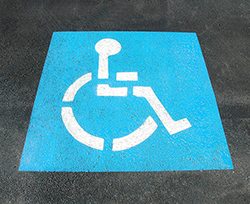 In early September, the credit reporting agency Equifax announced a significant data breach. Hackers were able to access the names, birth dates, Social Security numbers and addresses of 143 million consumers, which put their identity and credit at risk. A credit report freeze is one protective measure Equifax recommended. Every consumer, including you, should understand this protective measure as you protect your data, identity and credit.
In early September, the credit reporting agency Equifax announced a significant data breach. Hackers were able to access the names, birth dates, Social Security numbers and addresses of 143 million consumers, which put their identity and credit at risk. A credit report freeze is one protective measure Equifax recommended. Every consumer, including you, should understand this protective measure as you protect your data, identity and credit.
What is a Credit Report Freeze?
A credit report freeze allows you to restrict who can access your credit report. When a freeze is in place, only certain professional entities can see your information, and it’s less likely that an identity theft can access your data.
Ways a Credit Report Freeze Affects You
When you place a credit report freeze on your account, it affects you in several ways.
1. It prevents certain entities from accessing your credit report. This includes potential employers, mortgage companies and car dealers.
2. Existing creditors and any debt collection agencies they hire and government agencies responding to a court order or subpoena may continue to access your credit report.
3. You can continue to access your free annual credit report.
4. It does not affect your credit score.
5. You will continue to receive prescreened credit offers for credit or insurance. Call 888-5OPTOUT (888-567-8688) or go online to optoutprescreen.com if you wish to stop receiving these offers.
How to Place a Credit Report Freeze
Contact the three nationwide credit reporting companies to freeze your credit report.
- Equifax — 1-800-349-9960
- Experian — 1‑888‑397‑3742
- TransUnion — 1-888-909-8872
To place a freeze, you must provide your name, birth date, Social Security number, address and other personal information. You will also have to pay a fee. It typically ranges from $5 to $10 but varies based on where you live.
How to Know if Your Credit Report Freeze is Successful
After placing a credit report freeze, you will receive a confirmation letter from the credit reporting company. It includes a unique password or PIN you will need if you ever choose to lift the freeze.
How to Lift a Credit Report Freeze
Your credit report freeze remains in place indefinitely. However, you may want to lift it so you can apply for a job or credit. To do that, simply contact the credit reporting company to request a lift. You will provide your password or PIN, pay a fee that varies by state and indicate if you want a temporary or permanent lift.
A credit report freeze can protect your personal data and identity. Consider monitoring your bank, insurance and credit card statements, though, too, and purchase cyber liability insurance as a further protective measure.

 How secure are your business assets? According to the Association of Certified Fraud Examiners (ACFE), companies with less than 100 employees lose an average of $155,000 a year to fraud. Small businesses also have a higher fraud rate than larger firms and non-business owners.
How secure are your business assets? According to the Association of Certified Fraud Examiners (ACFE), companies with less than 100 employees lose an average of $155,000 a year to fraud. Small businesses also have a higher fraud rate than larger firms and non-business owners. Celebrate National Cyber Security Awareness month with strong passwords. They protect your information from cybercriminals and keep you safe as you use the internet.
Celebrate National Cyber Security Awareness month with strong passwords. They protect your information from cybercriminals and keep you safe as you use the internet. The Federal Emergency Management Agency (FEMA) reports that over 40 percent of businesses affected by a disaster do not reopen. Whether your business faces a natural, technological or human-caused disaster, you can get back to business quickly in several ways.
The Federal Emergency Management Agency (FEMA) reports that over 40 percent of businesses affected by a disaster do not reopen. Whether your business faces a natural, technological or human-caused disaster, you can get back to business quickly in several ways. Your small business insurance may cover data breaches, auto accidents and weather damage. To get reimbursed, though, you need to file a claim. Use these six steps to ensure your insurance claim is processed quickly and properly.
Your small business insurance may cover data breaches, auto accidents and weather damage. To get reimbursed, though, you need to file a claim. Use these six steps to ensure your insurance claim is processed quickly and properly. An engineer designs the site and grading plan for a construction project. After the project’s completion, the developer finds that the parking lot is not draining.
An engineer designs the site and grading plan for a construction project. After the project’s completion, the developer finds that the parking lot is not draining.
 The ISO Commercial General Liability Coverage Form can seem like a map that starts you out on a main road, takes you smack into a dead end, but offers you a right turn that you can take if you meet certain conditions. It begins with a broad promise and a hint that the promise isn’t quite that broad, then continues with a list of items that narrow that promise.
The ISO Commercial General Liability Coverage Form can seem like a map that starts you out on a main road, takes you smack into a dead end, but offers you a right turn that you can take if you meet certain conditions. It begins with a broad promise and a hint that the promise isn’t quite that broad, then continues with a list of items that narrow that promise. In the event a disability that causes an inability to work occurs, Disability insurance works to replace a portion of your absent income. Although it should be obvious why Disability insurance is critical protection, many workers assume that they don’t need private Disability insurance since Social Security disability benefits are available. What many fail to understand is that eligibility for Social Security disability benefits hinges on the severity of the disability.
In the event a disability that causes an inability to work occurs, Disability insurance works to replace a portion of your absent income. Although it should be obvious why Disability insurance is critical protection, many workers assume that they don’t need private Disability insurance since Social Security disability benefits are available. What many fail to understand is that eligibility for Social Security disability benefits hinges on the severity of the disability. Your teen is ready to drive, and you have the privilege of preparing them for this responsibility. Use nine tips as you prep your teen to navigate the road safely.
Your teen is ready to drive, and you have the privilege of preparing them for this responsibility. Use nine tips as you prep your teen to navigate the road safely. Are you planning to welcome trick or treaters to your home this month? Follow 11 steps that prepare your property for safe Halloween fun.
Are you planning to welcome trick or treaters to your home this month? Follow 11 steps that prepare your property for safe Halloween fun.



